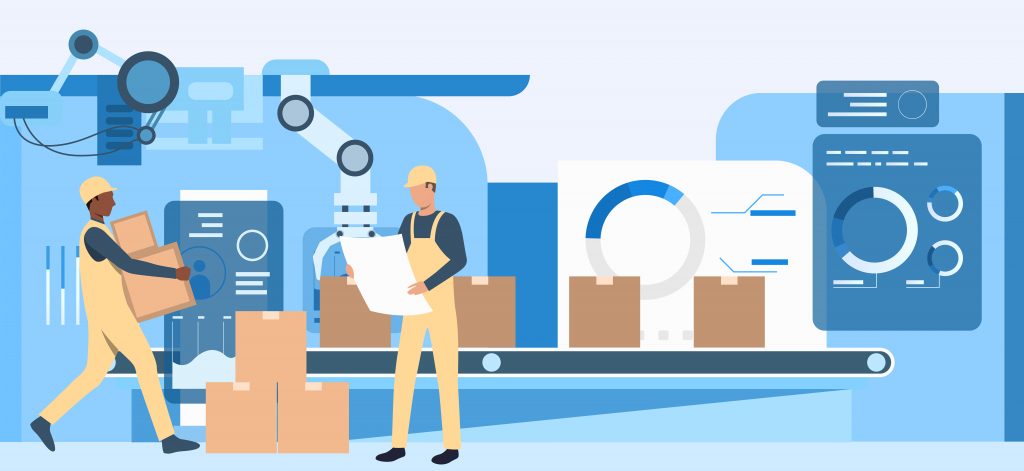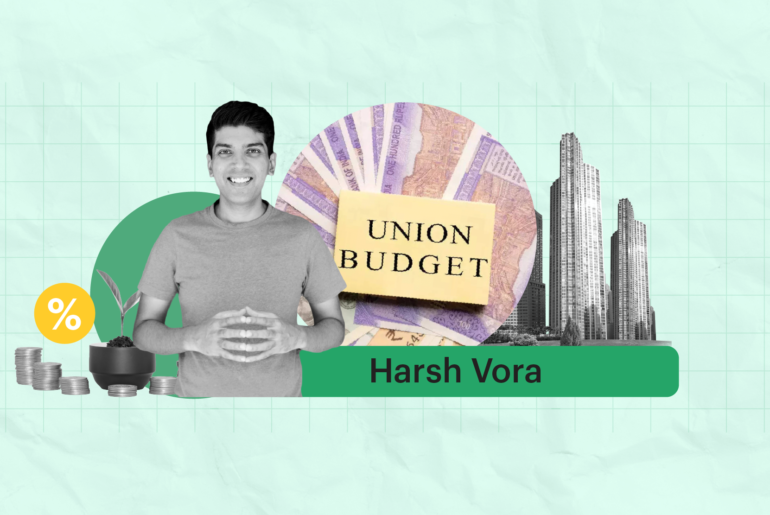Last Updated on Mar 24, 2021 by Manonmayi
Modi’s idea of turning COVID-19 to our advantage is making India ‘Atmanirbhar’. While this notion is quite inspiring given the extended gloomy days we have had since the advent of coronavirus (COVID-19), achieving the mission demands a generous financial infusion. And, the govt did announce a Rs 20 lakh crore economic stimulus to revive our economy. But we suggest considering the caveats before any drawing conclusion.
This article covers:
An introduction to the Rs 20 lakh crore-economic relief package
Tabular representation of the break-up of the economic stimulus
Tabular representation of the centre’s fiscal exposure in the economic package
Informal GoM to monitor the implementation of the economic package
An introduction to the Rs 20 lakh crore-economic stimulus
On Tue, Modi had addressed the nation regarding coronavirus for the 5th time and the following day, Sitharaman took to the media to elaborate the Rs 20 lakh crore-economic package he had mentioned. FM, along by her team, held daily press conferences to disseminate information about the centre’s responses aimed at reviving the economy. Here’s what we know and would like you to know.
Though Rs 20 lakh crore seems like a big figure, the package itself doesn’t entirely have fresh funds. In fact, this massive economic package subsumes old (announced in Feb and Apr) and new fiscal (announced by the Centre) and monetary (declared by the RBI) policies. In addition, it also subsumes new and long-pending amendments to existing Acts and reforms in various sectors.
The thing is govt expenditure is different from RBI’s. Ergo, the value of govt’s COVID-19 relief package is ideally less than what it is purported to be. The good news? The package can still pull the economy back from the muddy waters. We’ll tell you why. We’ll also tell you the significance of these measures. In the end, we’ll analyse and evaluate the role of the package amid the current siutation. Let’s start.
Wed, 13th May: Tranche 1 announcements
This phase of the announcement mainly focused on MSMEs, which are crucial for our economy. In addition, the centre also touched other subjects such as real estate, EPF, and TDS. Let us look at one at a time.
MSMEs
A host of measures were announced to support and uplift the MSME sector to improve their current business conditions and also in the post-COVID era. Riding on these measures, MSMEs, which employs close to 11 crore people, will generate significant employment opportunities. Here’s how MSMEs will benefit:
- MSMEs with outstanding loans of Rs 25 crore or turnover of Rs 100 crore will get collateral-free loans of Rs 3 lakh crore. In addition to a 12-month moratorium, such loans will have a tenor of 4 years, to ease the repayment term
- Stressed MSMEs or those with NPAs will get equity support via subordinate debt of Rs 20,000 crores
- Micro, small, and medium enterprises and their investment limit was redefined so they can expand and enjoy a host of benefits at every level of growth
- Govt will infuse equity worth Rs 50,000 crore in the sector via ‘Fund of funds’ schemes. The plan is to have a Mother Fund (govt’s investment) and several Daughter Funds (non-govt investment) to fuel MSMEs’ expansion
- Lack of exhibitions and trade fairs due to COVID-19 will be compensated by creating e-market linkages across the MSME board. This will help MSME’s to showcase and push their products for sale
- The govt has promised to settle MSME’s accounts receivable by public sector enterprises in 45 days
TDS and TCS
Rates for TDS and TCS will be slashed by 25%, which will infuse liquidity worth Rs 50,000 crore. The lesser the tax deducted at source, the more the disposable income you will have in hand. This would better equip you to meet your financial obligations.
Income Tax Return (ITR)
The due date for filing ITR for 2019-2020 is extended from 31st Jul and 31st Oct to 30th Nov. Thanks to this, the burden of tax payment will be eased in the near-term.
Global tenders
Global tenders of up to Rs 200 crore in public procurement will be disallowed. Tenders below Rs 200 crore will only be allowed in exceptional cases, where seeking written permission is mandatory.
The amendment of Global Tender Enquiry rules eliminates unfair competition posed by global players in public procurement and encourage MSMEs to actively participate and grow their businesses. Besides, it will also help in achieving Atmanirbhar Bharat Abhiyan and Make in India missions.
Employee Provident Fund (EPF)
The special withdrawal window for EPF is extended for 3 more months, which will offer liquidity of Rs 2,500 crores. In addition, the government has also reduced employer’s and employee’s EPF contribution to 10% for these months. This will infuse additional liquidity of Rs 6750 crores. Total liquidity infusion via EPF will be Rs 9,250 crores.
NBFCs/HFCs/MFIs
Govt has launched a Special Liquidity Scheme of Rs 30,000 crore for such businesses. NBFCs, in particular, will get liquidity of Rs 45,000 crore via a Partial Credit Guarantee Scheme 2.0.
DISCOMs
Govt will inject Rs 90,000 crore liquidity for power distribution companies via loans against state guarantees.
Contractors
Contractors of projects registered under RERA will get an extension of up to 6 months by central agencies. Additionally, contractors will have better cash flow, thanks to the partial release of bank guarantees.
Thu, 14th May: Tranche 2 announcements
At the heart of the 2nd tranche of the Rs 20 lakh crore economic package were migrant labour, street vendors, farmers, and self-employed individuals. Here’s a rundown of the host of measures for that the package has in store for them:
Migrants
- Migrant labourers are to get free food (grains and chana) in May and June. For this, workers without ration card and those not covered under the National Food Security Act will also be eligible. This will cost Rs 3,500 crore to the Govt of India
- The govt has also announced the One Nation one Ration Card initiative, which will allow ration cardholders across the nation to access food grain supply at any fair price shops in the country. While the first phase of the ration card portability scheme will benefit 83% crore cardholders, 100% will be achieved by March 2021
Street vendors
- The govt will offer an interest subsidy of 2% for a year on Shishu MUDRA loans worth less than Rs 50,000. This would offer the borrowers a relief of ~Rs 1,500 crores
- Street vendors would receive a credit facility of Rs 5,000 crore under a special scheme that will be launched within a month. This, the govt believes will help 50 lakh street vendors to restart their businesses by providing an initial working capital of up to Rs 10,000 each
MIG category of PMAY Urban
Credit Linked Subsidy Scheme (CLSS) for Middle Income Group (MIG) under PMAY (Urban) will be extended up to Mar 2021. The extension of the scheme will benefit 2.5 lakhs middle-income households (earning annual income from Rs 6 to 18 lakhs).
Thanks to this, the housing sectors would receive an investment of over Rs 70,000 crore and, in turn, generate employment opportunities. Besides, it would also create demand in sectors involved in the manufacturing and distribution of construction materials.
Farmers
- The govt will refinance Rs 30,000 crore to meet the crop loan requirement of Regional Rural Banks and Rural Cooperative Banks. Around 3 crore farmers would benefit from the move, who find support in meeting current Kharif and post-harvest Rabi requirements
- The govt will infuse additional liquidity of Rs 2 lakh crore by offering concessional credit to 2.5 crore beneficiaries of PM-KISAN including fishermen and animal the husbandry farmers via Kisan Credit Cards
Migrants, urban poor, and students
The govt plans to offer Affordable Rental Housing Complexes (ARHC) to offer affordable rental spaces and social security to migrants and urban poor via Public Private Partnership mode.
CAMPA
The Compensatory Afforestation Management & Planning Authority (CAMPA) will receive ~Rs 6,000 crore. The funds will be used for afforestation and plantation related works and create employment across the country in urban.
Thu, 15th May: Tranche 3 announcements
The 3rd tranche of the economic package mostly targeted at governance, administrative and agriculture marketing reforms. Like the previous tranche, most of the reforms announced in the 3rd tranche are also not entirely new. Here’s a rundown:
- Agri Infrastructure Fund worth Rs 1 lakh crore will be set up and Micro Food Enterprises will be formalised with an expense of Rs 10,000 crore
Reforms in the APMC Act will be announced to help farmers get a fair price for their produce and also develop farmers’ markets in towns to allow them to sell their produce without the involvement of middlemen - The old Essential Commodities Act will be amended to deregulate production and sale of food items. Also, no stock limit will be imposed on any produce except under critical circumstances such as national calamities and famine with a hike in prices
- Eliminate diseases in cattle, sheep, and goats for which an outlay of Rs 12,652 has been earmarked
- Operation Greens to be extended to all fruits and vegetables with an outlay of ~Rs 500 crore. This aims at promoting Farmer Producers Organisations, professional management, processing facilities, and agri-logistics
- Pradhan Mantri Matsya Sampada Yojana to be launched to establish a robust fisheries management framework and address issues related to infrastructure, production, modernisation, productivity, quality control and others
- Rs 4,000 crore herbal cultivation plans to be directed at growing medicinal plants along banks of Ganga
- Beekeeping scheme introduced to benefit 2 lakh apiary developers
Fri, 16th May, Tranche 4 announcements
The 4th tranche of the economic package included pushing reforms, both old and re-bundled in sectors including coal mining, defence production, minerals, MRO, airports, air space management, space, distribution companies in UTs and atomic energy. Most of the reforms are either old or re-bundled. The reforms include:
- Opening doors for commercial mining of coal
- Incentivising coal gasification and liquefaction
- Hiking FDI limit via the automatic route to 74% from 49% in defence production
Reiterating on easing the utilisation of the Indian Air Space to reduce the cost of air travel. Thanks to this, the Indian aviation sector is expected to benefit from reduced flight timings and also save Rs 1,000 crore annually - Bringing 6 more airports under the ambit of PPP in order to generate more revenue and achieve increased efficiency
Introducing viability gap funding (VGP) to boost private investment in social infrastructure - Ranking industrial parks and mapping land banks on Industrial Information System (IIS)
Privatisation of DISCOMS in Union Territories (UTs)
Sat, 17th May, Tranche 5 announcements
In the final tranche, the FM covered a plethora of set of announcements related to various education and other broader sectors areas such as:
- MGNREGA will receive additional Rs 40,000 crore
- One nation one digital platform will be introduced for e-education and online content will be made available for disabled students
- Top 100 universities can start giving online courses
- One class, one channel will be introduced and radio content on education also will be made available
- Debts accumulated because of COVID-19 will be excluded from ‘default’ category under the IBC Code
- A special insolvency framework will be announced for SMEs
- Minor procedural and technical defaults under the Companies Act will be decriminalised to de-clog the NCLT and criminal courts
- All except strategic sectors will be open for private players. Further, a new policy will be notified to public sector enterprises and strategic sectors will have maximum 4 and minimum 1 public sector enterprise (PSE)
- Companies are allowed to list their securities directly in foreign jurisdictions
States borrowing limit increased by Rs 4.28 lakh crore, which is 5% of Gross State Domestic Product (GSDP). However, the release of funds is conditional - Rs 11,092 crore and Rs 4,113 crores released by the State Disaster Relief Fund and Health Ministry, respectively
Tabular representation of the break-up of the economic package
All in all, the COVID-19 economic package had 5 tranches, each of whose monetary value is listed in the table below:
| Sl No | Particulars | Rs Amount in cr |
| 1 | Tranche 1 | 5,94,550.00 |
| 2 | Tranche 2 | 3,10,000.00 |
| 3 | Tranche 3 | 1,50,000.00 |
| 4 | Tranche 4 and 5 | 48,100.00 |
| Sub-total | 11,02,650.00 | |
| 6 | Measures announced previously under Pradhan Mantri Garib Kalyan Yojana | 1,92,800.00 |
| 7 | RBI’s monetary policies in play | 8,01,603.00 |
| Total | 20,97,053.00 |
Tabular representation of the centre’s fiscal exposure in the Rs 20 lakh crore economic package
| Particulars | Rs Amount in crore |
| Previous announcements made by the PM* | 1,08,495 |
| Tranche 1 of economic package | 25,500 |
| Tranche 2 of economic package | 5,000 |
| Tranche 3 of economic package | 30,000 |
| Tranche 4 of economic package | 8,100 |
| Tranche 5 of economic package | 40,000 |
| Total | 2,17,095 |
*Includes PMGKY announcements, anti-COVID-19 health measures of Rs 15,000 crore, and loss of revenue of Rs 7,800 crore
Informal GoM to monitor the implementation of the economic stimulus
Informal GoM to monitor the implementation of the economic stimulus
To monitor the smooth and effective implementation of the 20 lakh crore economic revival package, Modi has entrusted the responsibility to an informal group of ministers (GoM). Chaired by Defence Minister Rajnath Singh, the GoM consists of Finance Minister Nirmala Sitharaman, Home Minister Amit Shah, Civil Aviation Minister Hardeep Puri, and Railways and Commerce Minister Piyush Goyal.
Key takeaways
All in all:
- Given our massive economy, the ratio of our population and immediate financial resources is this disproportionate. Besides, the government also has to keep some money safe for contingencies and strategic plans. Ergo, the govt is looking to make a significant impact with minimum financial resources and pave a path for a self-reliant India
- The Rs 20 lakh crore economic revival package is mostly dominated by credit infusion, liquidity measures, reforms, and amendments to existing acts rather than having significant fiscal exposure (it sums up to less than 10% of GDP that the centre claims)
- On careful evaluation of the package and its plan for implementation, you will notice that the centre has very little fiscal exposure even in this financial year
- Major exposure of the centre is either contingent upon beneficiaries defaulting on their credit repayments as mentioned above. Or, since the implementation of certain measures, reforms, and amendments will take time, the centre’s fiscal exposure will also be postponed
- A majority of the reforms and amendments are reiterations of the pre-COVID era. Ergo, it seems like the centre is using COVID-19 as a cover to reintroduce pending measures
Nevertheless, by not throwing free money into the system, the centre has avoided the associated risks. Free ka maal is often taken for granted. Anyway, experts also believe that though the economic package may not address the near-term crisis of businesses, it will create a favourable environment for them in the medium- and long-term.
- How To Analyse Stocks: Identifying Fundamentally Strong Companies - Nov 20, 2024
- Best ETFs in India: NSE ETF Lists of Gold, Debt & Equity ETFs (2024) - Nov 7, 2024
- Best Gold ETFs in India With Expense Ratio - Oct 29, 2024




